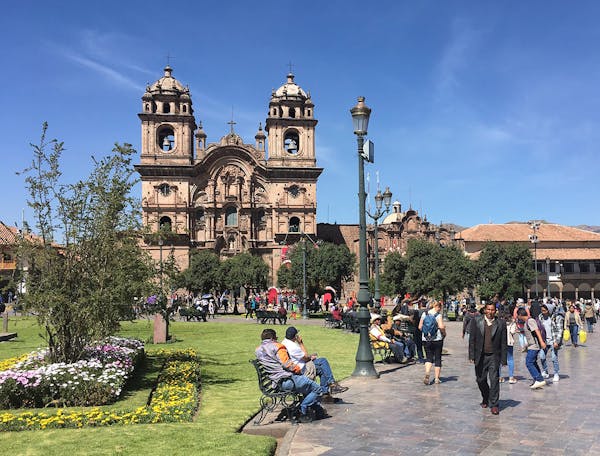When we told people in Peru's high country that we planned to end our Machu Picchu trek with two nights in Lima, we often were met with some variation of, "Why?"
A sprawling city of more than 10 million people — the second-largest in South America after São Paulo — Lima predictably has problems with traffic, pickpockets and bad chain restaurants. It also doesn't have great weather; our entire time there it was overcast and drizzly. And for a city that size, it's not exactly teeming with rich cultural opportunities.
We did, however, find enough to justify at least a short stay:
Museo Larco: Who knew archaeological museums could be so pretty? It's set in a gorgeous, old, flower-adorned white mansion with true treasures inside and a must-try restaurant, too.
Barranco neighborhood: The nearby Miraflores area is where most tourists stay, but this older and artier neighborhood had a lot more character and better restaurants, from the edgy but cozy seafood cafe Sibaris to the century-old sandwich and wine haven Bodega Piselli.
MATE museum: Longtime Vogue and Vanity Fair photographer Mario Testino's truly eye-popping images line this colorful Barranco highlight, which includes a room dedicated to Princess Diana's final photo shoot. Admission fees go to local arts funding, not the allegations-plagued Testino.
Cathedral Basilica de Lima: It's almost worth fighting the traffic into Lima's historic downtown to visit this 500-plus-year-old megachurch, with its series of amazing, hand-carved altars and creepy tombs.
The seafood: Start with the ceviche, stay for the sea bass, leave without ordering anything fried.
The exchange rate: With one U.S. dollar fetching around three of Peru's soles, our often lengthy meals were usually no more than $30 U.S. per mouth, and Uber car rides (no Lyft) were usually around $5. Which came to about 15 cents per minute in traffic.
Chris Riemenschneider
The summer after Barbenheimer and the strikes, Hollywood charts a new course

Gophers football coach P.J. Fleck lists 'resort-style' Edina home for $3.9 million
Mexican film wins top prize at Moscow International Film Festival while major studios boycott Russia
Why you might have heard Paul Simon's 'The Sound of Silence' at Spanish Mass

